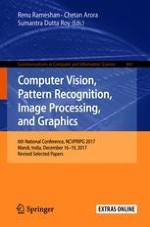2018 | OriginalPaper | Buchkapitel
Predicting Word from Brain Activity Using Joint Sparse Embedding with Domain Adaptation
verfasst von : Akansha Mishra
Erschienen in: Computer Vision, Pattern Recognition, Image Processing, and Graphics
Verlag: Springer Singapore
Aktivieren Sie unsere intelligente Suche, um passende Fachinhalte oder Patente zu finden.
Wählen Sie Textabschnitte aus um mit Künstlicher Intelligenz passenden Patente zu finden. powered by
Markieren Sie Textabschnitte, um KI-gestützt weitere passende Inhalte zu finden. powered by
